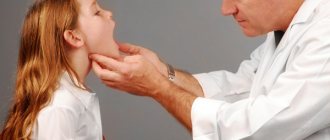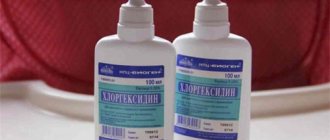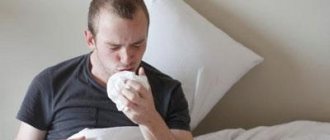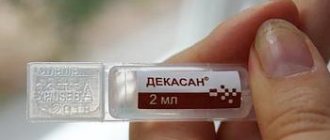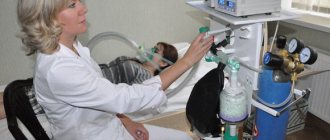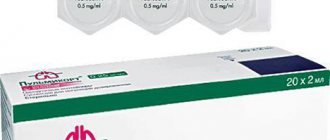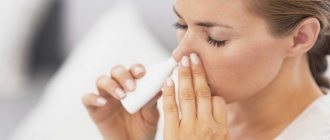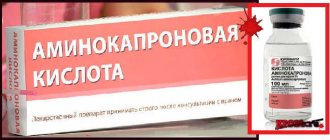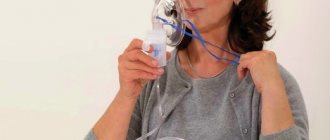Inhalations with Chlorhexidine are usually used in combination therapy for inflammation of the mucous membranes of the nose, throat and lymphoid pharyngeal ring. This treatment is based on inhalation of moist heated air or medications. Therapy is carried out to eliminate the inflammatory process, relieve pain, and cleanse the respiratory tract of dust particles and harmful microorganisms. A large number of medications in the pharmacy gives patients the opportunity to choose the best one for themselves, based on its mechanism of action. "Chlorhexidine" is considered the most effective and high-quality in the treatment of inflammation. It can be used by both adults and children. You should decide whether it is possible to inhale Chlorhexidine through a nebulizer.
Description of the drug
Chlorhexidine has continued to be actively used over the past 60 years and is produced by more than 60 pharmaceutical companies. Over this period of time, the drug has established itself as a high-quality antiseptic that helps get rid of viral, fungal, and bacterial microflora.
The drug is available in the form of “Chlorhexidine Bigluconate” and contains chlorine-containing biguanide derivatives. The product is used not only for application to the skin. In addition to the solution, it is also available in the form of gel, cream and patch.
Experts note the following properties of solutions prepared on the basis of chlorhexidine:
- Bacteriostatic (prevents bacteria from actively multiplying in microflora that is comfortable for them). Manifests itself in any concentration of the created solution.
- Bactericidal (leads to active death of microorganisms). The created product must have a concentration above 0.01%, room temperature and act on the diseased area for at least a minute.
- Fungicidal property (leads to the death of fungi). The created product must have a concentration of at least 0.05%, be at room temperature and act on microorganisms for 10 minutes.
- Virucidal (actively fights viruses). The concentration of the solution should be from 0.01 to 1 percent. To destroy bacteria and harmful microorganisms, the solution should be preheated.
When is the remedy effective?
Inhalations with Chlorhexidine in a nebulizer are effective in combating harmful microorganisms such as:
- treponema;
- chlamydia;
- herpes virus;
- influenza virus;
- fungus;
- respiratory syncytial virus;
- ureaplasma;
- gardnerella;
- ureaplasma;
- cytomegalovirus.
"Chlorhexidine" begins to interact with phosphate groups that are located on the surface of the pathogenic cell. This leads to problems with osmotic balance, deforms pathogenic cells and actively destroys them. As a result of this action, the patient's condition is restored over time.
Instructions for inhalation
You should prepare before the procedure. Inhalations should be carried out while in a calm emotional state. The rules of procedure must be followed by adults and children. You should adhere to medical prescriptions and carefully read the instructions for use of the medicine.
For adults
Chlorhexidine is an antiseptic that can fight various bacteria and microbes.
During the procedure, particles of the solution enter the mucous membrane of the respiratory tract and have a healing effect.
Chlorhexidine is suitable for inhalation by nebulizer for adults and children.
You can inhale the medicine over a pan of hot water or through a special device (nebulizer).
The device breaks down the active components into an aerosol. This way they reach the affected area faster, and the therapeutic effect occurs sooner.
Important! Doctors recommend 3 inhalations per day, no more.
How to properly do inhalations with Chlorhexidine? An adult does not need to dilute the product before the procedure. In some situations, the doctor prescribes 1 ml of Chlorhexidine and 5 ml of saline.
The long-term effect of the drug is explained by rapid absorption and prolonged exit from the patient’s body. It is important to choose the correct concentration of the substance.
For children
There are certain recommendations from doctors that should be remembered if therapy is carried out on a child.
Rules:
- The procedure should be carried out no earlier than an hour after eating.
- Children should not talk while inhaling Chlorhexidine in a nebulizer.
- For an hour after the procedure, you should be completely at rest and not go outside.
- The number of inhalations is prescribed by the attending physician.
- During the procedure, the child must breathe evenly and deeply.
For children, the product must be diluted with saline solution (proportions 1:1). The baby should be in a calm state and emotionally prepared. Parents should tell their child in detail how to behave during inhalation.
Important! For dilution, only saline solution is used. Any other liquid will reduce the healing properties of the drug.
When should it be used in inhalation form?
When is inhalation with Chlorhexidine done? The instructions for the drug do not provide for its inhalation administration, but many years of medical practice have shown how effective this method of using the drug is. Many doctors even prescribe inhalations with Chlorhexidine to children. Particles of the active component, during inhalation, enter the infected mucous membrane of the respiratory tract and settle in this place.
Inhalations with Chlorhexidine in a nebulizer are recommended for children and adults in the following conditions:
- rhinitis – inflammation of the nasal mucosa;
- rhinopharyngitis - an inflammatory process that spreads to the sinuses;
- laryngitis is a painful condition characterized by inflammation of the larynx;
- Tonsillitis (tonsillitis) is an inflammatory disease that forms in the lymphoid pharyngeal ring and spreads to the tonsils;
- tracheitis - disease of the pharynx;
- for the prevention of inflammation in the nose, upper respiratory tract, pneumonia and bronchitis.
How to inhale with Chlorhexidine
Inhalations with Chlorhexidine should be done taking into account the characteristics of the disease, but be sure to comply with the specified proportions and amount of the drug by the doctor.
For rhinitis
If you have a runny nose, it is important to thoroughly clean the nasal cavities of mucus and crusts before inhalation. To do this, rinse your nose with warm saline or saline solution. To prepare the latter, take a level teaspoon of salt and baking soda per 1 glass of water. For rinsing, it is convenient to use a baby syringe with a soft tip.
Inhalation is carried out using nasal prongs or a mask, but you need to breathe through your nose. If there is severe congestion, drops with a vasoconstrictor effect are instilled within 15 minutes.
Before inhalation, the child’s nose is washed
For sinusitis
If the maxillary sinus is inflamed, it is necessary to restore nasal breathing before inhalation, since if there is severe swelling, the drug will not get to the right place. Often, the doctor recommends first inhalation with Fluimucil (ACC injection), and an hour later with Chlorhexidine. 2 procedures are prescribed per day, the course of treatment lasts up to 7 days.
For other ENT diseases
If the nasopharynx is affected (rhinopharyngitis), it is best to use a mask and inhale through the nose, hold your breath for a couple of seconds, and exhale through your mouth. If you have a sore throat, you can use a mouthpiece instead of a mask. Then the order of breathing movements is reversed - inhale through the mouth and exhale through the nasal passages. Inhalations are carried out 3 times for 3-5 days.
They can be supplemented by rinsing with herbal infusions with a softening effect - chamomile, linden leaf, calendula flowers (a teaspoon per glass of water, leave for 30 minutes). They should be done 30 minutes before inhalation.
When coughing
If you have a dry, non-productive (without sputum) cough or with viscous, difficult-to-clear mucus in the respiratory tract, it is not recommended to use Chlorhexidine without expectorants (Ambrobene, Lazolvan) and phlegm thinners (Fluimucil).
In such cases, it is recommended to alternate inhalations: first, solutions to dilute sputum are poured into the nebulizer, then stimulants for its promotion (second inhalation after 2-3 hours), and only the third procedure with an interval of 3-4 hours is carried out with Chlorhexidine.
How does the product work?
Do they do inhalations with Chlorhexidine? A nebulizer is a modern device for inhalation, which is distinguished by its ability to split liquid solutions into an aerosol state, dividing them into individual dispersed particles. This device can be used at home; it is well suited for both children and adults.
A compression nebulizer is considered the most effective and convenient to use. It is easy to use, does not require any application skills, and easily treats the nasal cavity. The device has a special compression device, under the influence of which liquid medicine poured into the receiving chamber turns into an aerosol without heating up.
The product does not heat up, which is very important for a nebulizer. With this feature, inhalation can be performed on adults and children even in the presence of elevated body temperature. It is important to remember that hyperthermia is considered a contraindication to heat-moisture inhalations.
How is inhalation performed?
Before inhalation, the nose should be thoroughly cleaned of mucus and dry crusts accumulated in it, as this will prevent the active components in the product from spreading normally through the respiratory tract and settling on the affected mucous membrane.
If necessary, it is allowed to use special vasoconstrictor drops or rinse the nose with a weak solution of sea salt.
How to carry out inhalation correctly: duration and frequency
In order to carry out inhalation through a nebulizer, you need to place the medicinal drug in a special container of the device. The duration of the session depends on the diagnosis; the easiest way is to regulate it through the amount of the product used. It is enough to place the amount of medicine recommended by the doctor into the device and continue the procedure until it runs out.
Adults can do inhalations up to 3 times a day; doctors do not recommend that children undergo more than one procedure per day.
For rhinitis, the airways should be washed and cleared of mucus and hardened crusts. When cleaning is not possible, you can resort to nasal drops or a weak solution of sea salt.
What to do for rhinitis?
Inhalation of Chlorhexidine through a nebulizer in the presence of rhinitis should be accompanied by inhalation of the contents of the bottle through the nose. Exhalation can be done either through the nose or through the mouth. The volume of the product used should not be more than 10 milliliters for an adult and 5-7 milliliters for children.
Particular attention should be paid to the proportion of inhalation with Chlorhexidine. Since the medication is produced in a concentration of 0.05%, the proportions for treatment must be determined by the treating specialist himself. Adults can use the product undiluted; for children, the drug should be diluted depending on the age and severity of the disease.
Fungal infections do not need to change the concentration. To effectively combat microorganisms, a ratio of 1:5 can be used (5 milliliters of physiological solution are taken per 1 milliliter of medicine).
Inhalations through a nebulizer can be performed 2 to 3 times a day for an adult. For children, the dosage is determined by a pediatrician.
How to perform inhalation
For treatment to be effective, the procedure should be performed through a nebulizer. Before inhalation, it is necessary to clear the nostrils of accumulated mucus so that the drug quickly eliminates inflammation. If there is thick discharge, you need to use vasoconstrictor drops or rinse your nose with a mixture of sea salt and warm water.
It is necessary to inhale the vapors from the nebulizer gradually for 5-10 minutes. It is recommended to carry out therapy while in a sitting position. Certain nuances of inhalations with Chlorhexidine depend on the type of disease.
For rhinitis
The dosage for the treatment of rhinitis should not exceed 10 ml for adults and 7 ml for children. When treating children, Chlorhexidine should be diluted with saline; adults are allowed to use a non-concentrated drug. You need to inhale the drug through your nose, and exhale can be arbitrary.
For sinusitis
Before performing the procedure to eliminate sinusitis, it is necessary to dilute the drug with sodium chloride in a ratio of 1:5. The steam should be inhaled through the nose and exhaled through the mouth. Thus, the medication will spread to the entire mucous membrane of the nasopharynx. The optimal number of inhalations per day is 3-4 sessions.
For other infections
Therapy for other infectious diseases requires alternate inhalation of steam through the mouth and nose. Penetrating into the nasopharynx, the drug immediately has an effect and gradually eliminates signs of inflammation. A non-concentrated solution is suitable for treating most infections.
Inhalations for children
Performing steam procedures in childhood is the safest method of fighting infections. Inhalations serve as an alternative to standard nasal rinsing, which is difficult for children. For the drug to penetrate the mucous membrane of the respiratory tract, it is necessary to first remove the mucus from the nasal cavity.
You should not talk during the procedure, and you should limit your food intake for an hour after inhalation. The doctor should prescribe the appropriate number of daily therapy sessions for the child.
During pregnancy and lactation
"Chlorhexidine" belongs to the category of topical drugs, but its effect on the body of pregnant women has not been fully studied. Considering that the medication does not contain toxic components, it can be used for treatment on the recommendation of a doctor, who, based on the current state of health, will weigh the benefits and probable risks.
There is no official data on the penetration of the substance into breast milk. During lactation, inhalations should be carried out in minimal quantities or replaced with alternative therapy.
If you have sinusitis
Inflammation in the paranasal sinuses most often begins as a result of bacterial damage. When carrying out inhalations through a nebulizer, certain rules should be followed:
- exhale and inhale only through the nose;
- use a diluted product in a ratio of 1:5 with a physical solution;
- every day it is allowed to carry out inhalations no more than 3 times;
- if desired, the patient can replace one inhalation with rinsing the respiratory tract;
- If otitis media or perforation of the eardrum is additionally added to the disease, then treatment is contraindicated due to the high risk of adverse reactions and complications.
Main contraindications for use
Treating specialists identify a number of conditions during which the described drug, even through inhalation with a nebulizer, is prohibited from use.
The main contraindications are:
- individual hypersensitivity to the active components of the drug;
- children under one year of age;
- perforation of the eardrum;
- presence of traumatic brain injury;
- complicated otitis media;
- bearing a child;
During lactation, as well as when carrying a child, the possibility of using the drug should be discussed with a doctor. Inhalation is prohibited for patients with bronchial asthma.
What adverse reactions exist?
When conducting self-treatment and using the wrong dosage, the patient runs the risk of problems, adverse reactions and complications. The patient may feel discomfort and burning on the nasal mucosa and throat. Minor discomfort does not require treatment and goes away on its own within 15-30 minutes after the end of the procedure.
More persistent reactions require stopping the medication completely and visiting a healthcare professional to evaluate the condition.
An additional adverse reaction may be the appearance of dark-colored plaque on the teeth. This most often happens when the program on the nebulizer is incorrectly set, as a result of which dispersed particles enter the oral cavity and settle on its mucous membrane. This type of plaque can be eliminated by visiting a dentist or by rinsing your mouth with a product containing chelated zinc.
When administering the drug through a nebulizer, it can cause severe dryness of the mucous membranes. You can get rid of this condition by instilling saline solution or sea water into your nose.
It is important to remember that Chlorhexidine, like any other medicine, can provoke a severe allergic reaction. Allergies can be characterized by the following symptoms:
- rashes on the skin, redness, accompanied by unpleasant itching and hyperemia;
- severe runny nose and nasal congestion, red eyes;
- sneezing.
Before starting inhalation treatment, individual sensitivity to the active components of the product should be checked. If necessary, the test can be carried out not at home, but in a medical facility.
At home, a drop of the drug should be applied to the skin of the wrist (here the skin is thinner and more sensitive); in the clinic, the product is applied to the skin after a medical worker makes small scratches on it with a scarifier. After 10-15 minutes you can evaluate the result. If red rashes appear on the skin, the patient feels burning and itching, then this remedy should not be used.
Possible side effects
As a rule, inhalation procedures are well tolerated by both adults and children. Since this drug is used, the following side effects are possible:
- Mild burning, discomfort in the throat or nasal cavity. There is no need to take any specific actions, because literally after a while all the unpleasant sensations disappear.
- An aerosol containing chlorhexidine gets into the oral cavity and stains the teeth black or brown. This occurs if, before the procedure, the parameters for the converter of the solution into aerosol particles were incorrectly set on the nebulizer. You can only get rid of such plaque in a dental clinic or with the help of a special mouth rinse that contains chelated zinc.
- Severe drying of the mucous membrane. This usually occurs during inhalation for a runny nose and sinusitis; the unpleasant feeling of dry mucous membranes disappears after washing the nasal passages with sea water or any other means.
Quite often, doctors note such side effects as itching/redness of the skin - this is how an allergic reaction to chlorhexidine manifests itself. If you do not abandon inhalation procedures immediately, then everything can end in extensive swelling and death of the patient. Therefore, if any side effects occur, you should immediately stop performing the procedures in question and seek qualified medical help from your doctor.
During pregnancy
The drug belongs to group B. This indicates that it is allowed to be used during pregnancy, but only after consulting a doctor and under his strict supervision. Chlorhexidine should not be used during breastfeeding, as it may adversely affect the quality and quantity of milk.
When using the drug by inhalation, a special saline solution is required, which can be purchased at any pharmacy. The product cannot be diluted with water, as it impairs the bactericidal properties of the drug.
It is important to store the medicine out of the reach of children. When taking it internally, you should immediately perform a gastric lavage and take several tablets of activated charcoal.
